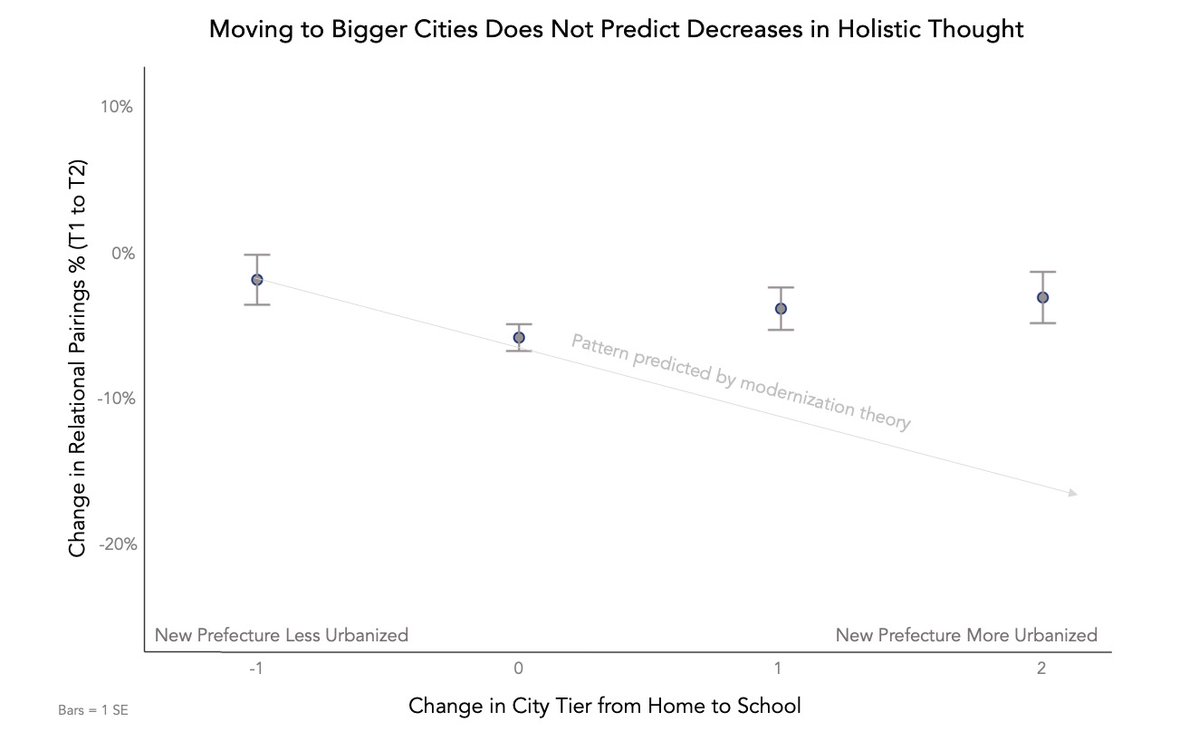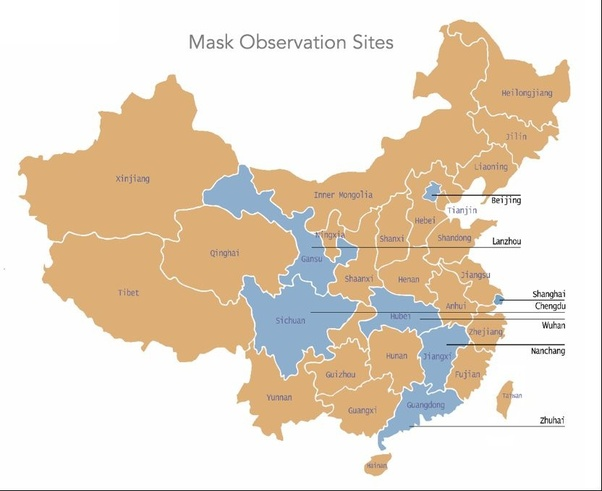This study took us years and years, and it's finally out! 🥳 Here's years of our life in 60 seconds. 🚨 @BPSOfficial @AlexEngPsych @liuqing_wei @Tongrongtianbpspsychub.onlinelibrary.wiley.com/doi/10.1111/bj…
Here's the conclusion first: Kids in China aren't farming much these days (shocker!), but they're still learning rice-wheat ways of thinking.
We tested them right when they arrived at college (~August) and at the end of their first semester (~January). Then we tested them again three years later.
We gave them a categorization task that’s been used a ton to measure cultural differences. You choose two of three objects to categorize together. 

People in individualistic, WEIRD cultures tend to choose the abstract, categorical pairings. People in collectivistic, non-WEIRD cultures tend to choose the relational pairings. 
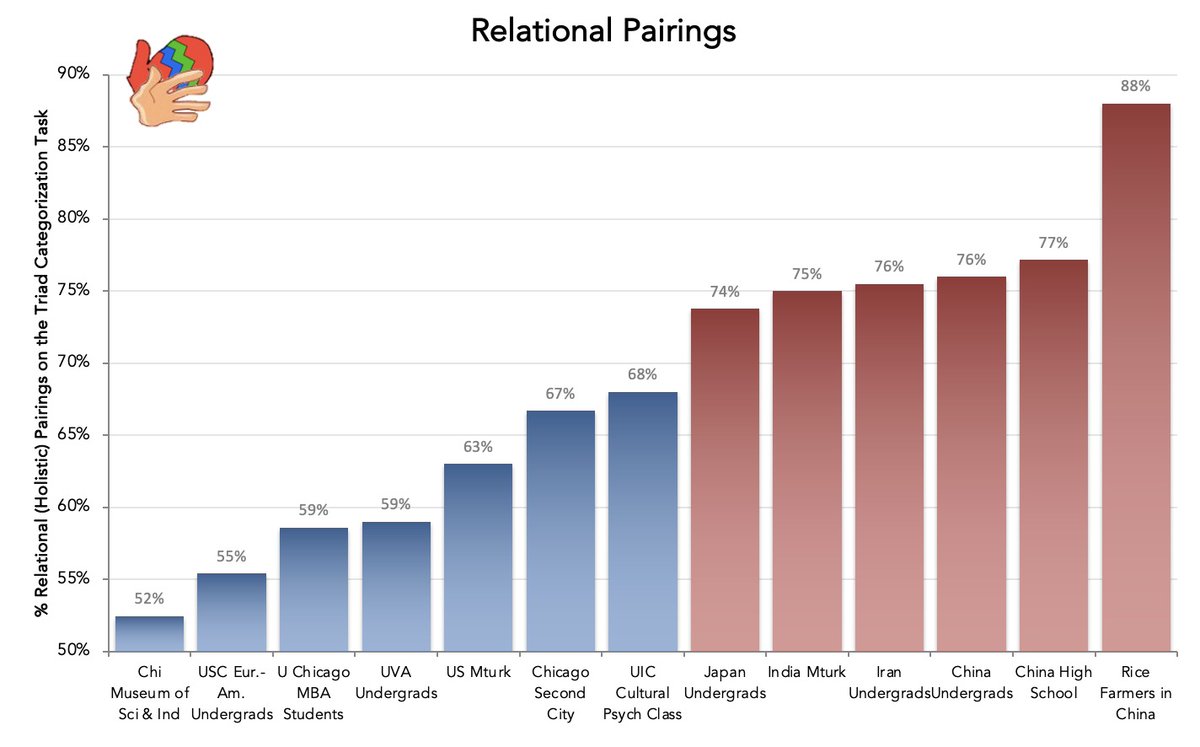
This setup is exciting (to me!) because we can test how people's thought style changes in different environments. For example, do people who move from small town to big cities like Beijing and Shanghai think more like WEIRD Westerners? @JoHenrich @StevenHeine4 
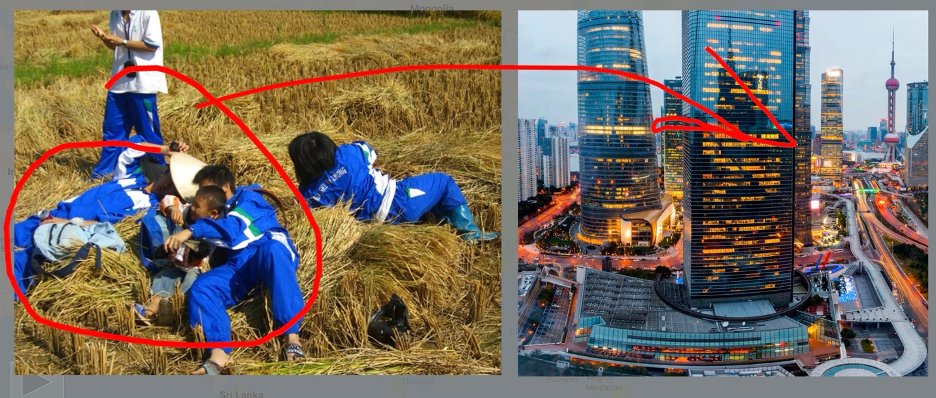
That’s what most people think! We asked 188 psychology students and professors to guess what we’d find, and they predicted that people moving to big cities would think a LOT less relationally (-28%). 

OK, maybe it’s economic development that matters more? Our guessers predicted strong effects for moving to wealthier areas. 

But again, the data showed nothing! If anything, there was a slight trend in the *opposite* direction. Students moving to wealthier areas tended to think more holistically over time than other students. 
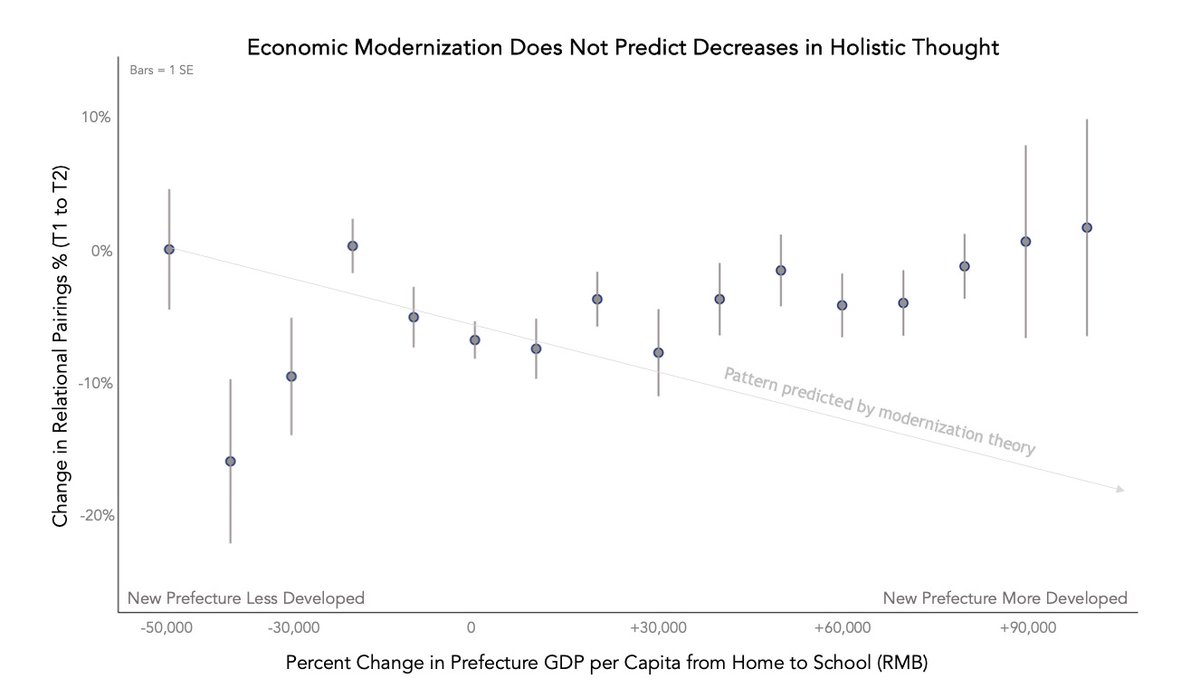
Why would that be? Well, China’s rice-farming regions are a little wealthier on average than wheat-farming areas... 
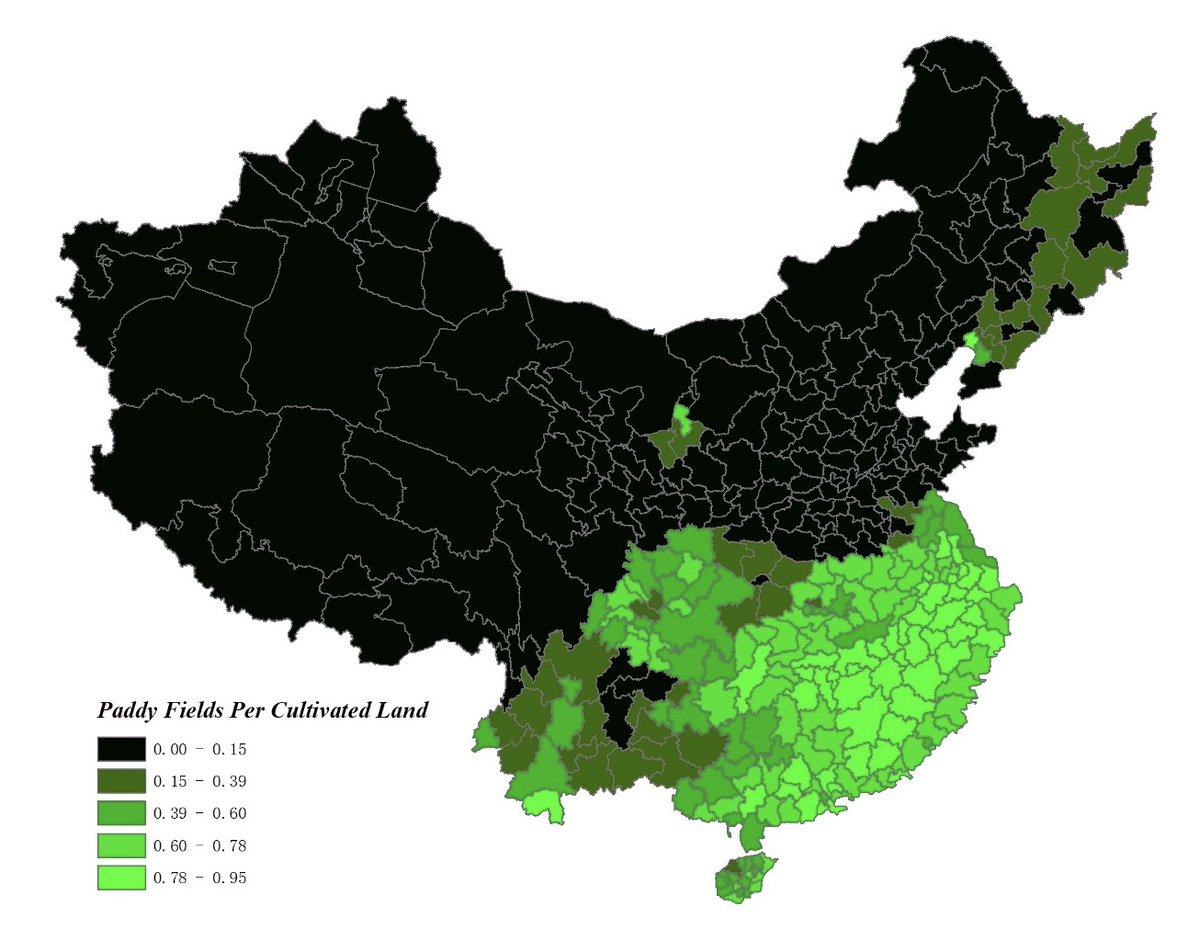
Rice farming required more labor and coordination than wheat, so China’s rice areas tend to be a little more interdependent and think more holistically. journals.sagepub.com/doi/abs/10.117…
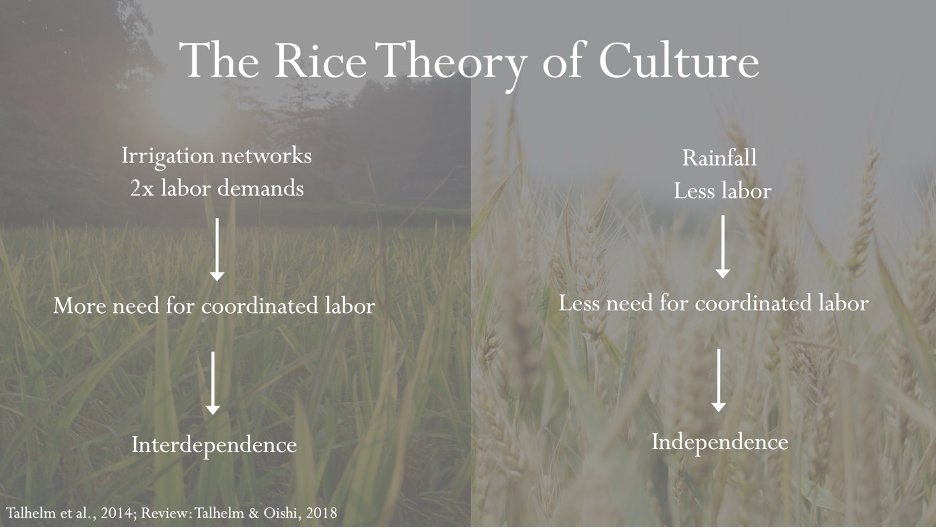
So maybe that odd wealth trend is because of rice farming?
Bingo! 🎯 What DID explain the changes in people’s thought style was whether they moved to a historically rice-farming area (like Shanghai) or wheat-farming area (like Beijing). 

The changes continued through year 3. But the change came fast in the beginning and slowed down over time. 

Here’s why this data fascinates me. Young people in China are still learning cultural legacies rooted in ancient farming! That’s despite the fact Chinese society is moving away from farming. 
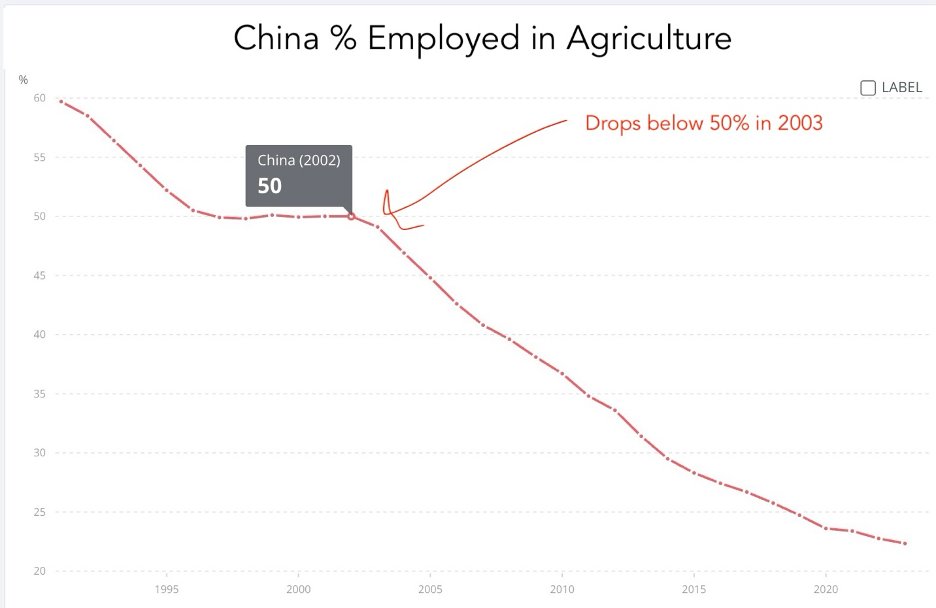
Instead, cultures lives on in other ways. Maybe it's how relationships are structured, how teachers teach, or simply fitting in with other people. For example, newcomers’ thought style became more correlated with locals’ over time. 
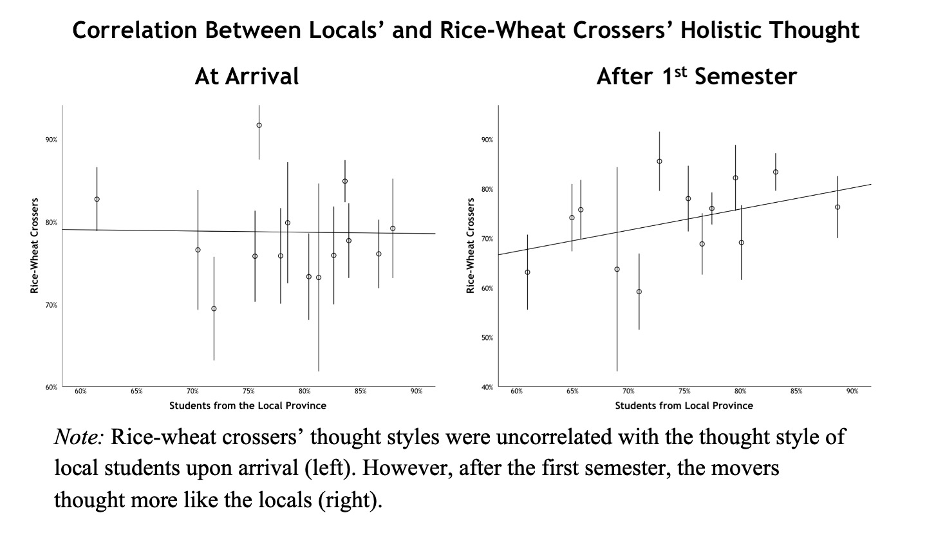
Bottom line: Rice-wheat differences are alive and well among young people moving around China. The history of rice farming explained more of how people's thought style changed than urbanization. 

The original full text is available without a paywall at @SSRN: papers.ssrn.com/sol3/papers.cf…
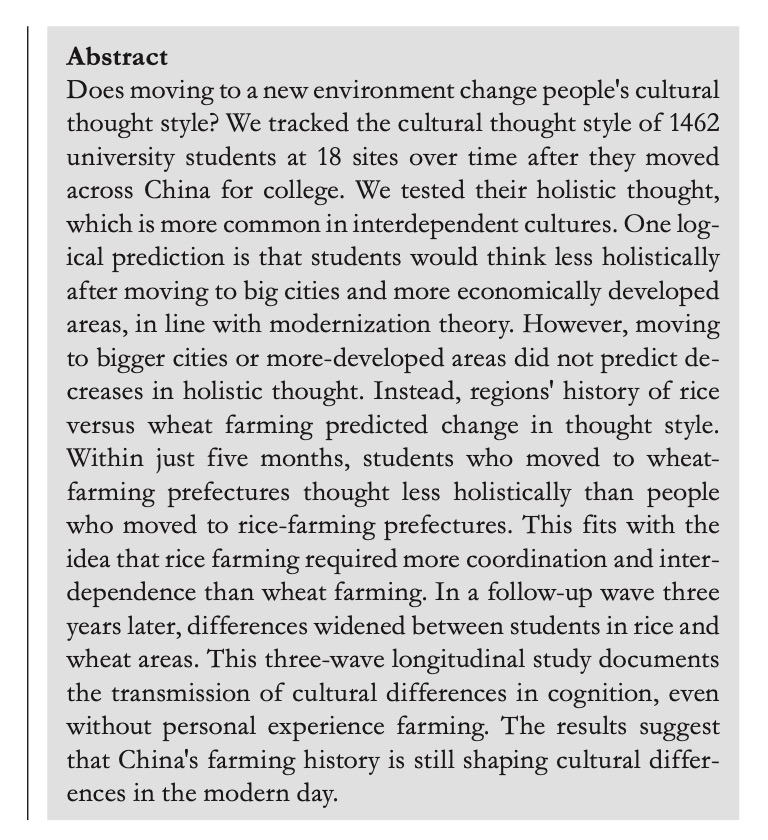
@SSRN Much credit should go to my many co-authors. 👏 Testing over 1,000 people longitudinally over three years was a LOT of work! @AlexEngPsych @liuqing_wei @Tongrongtian @Aaaalice268 

Thanks to @iaccp for inviting me to talk about this work years ago, when we were still working on it. The feedback was a great help! 🙌
• • •
Missing some Tweet in this thread? You can try to
force a refresh


